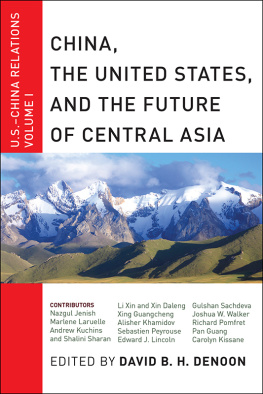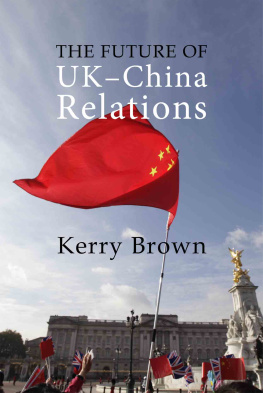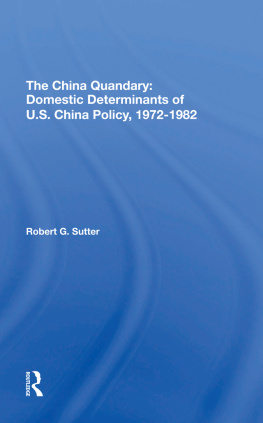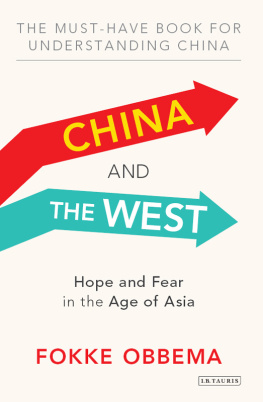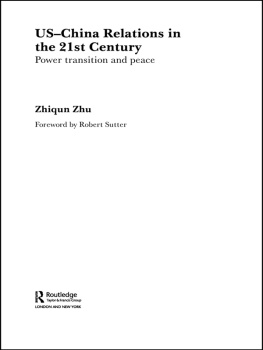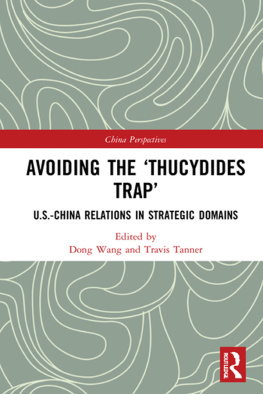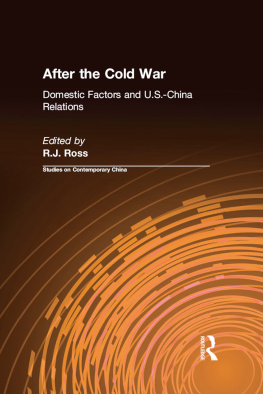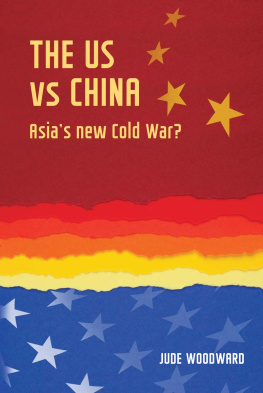NEW YORK UNIVERSITY PRESS
New York and London
www.nyupress.org
2015 by New York University
All rights reserved
References to Internet websites (URLs) were accurate at the time of writing. Neither the author nor New York University Press is responsible for URLs that may have expired or changed since the manuscript was prepared.
ISBN: 978-1-4798-4433-3 (hardback)
ISBN: 978-1-4798-4122-6 (paperback)
e-ISBN: 978-1-4798-0944-8 (ebook)
For Library of Congress Cataloging-in-Publication data, please contact the Library of Congress.
There is already a vast and growing literature on U.S.-China relations. Starting with the Qing Dynasty (16441912) and continuing through the Chinese civil war (193449) and on to the present, there is a voluminous record of the interaction between Americans and Chinese. Not surprisingly, most of the work deals with bilateral ties: economic, cultural, diplomatic, and military.
The most significant change in this relationship has occurred in the past three decades as China changed from an isolated, low-income country to a major military power with the worlds second-largest economy. Although China and the United States are economically interdependent, their differences in culture, political system, and history continue to make their interaction complex and often problematic.
One of the major goals of the New York University Center on U.S.-China Relations is to analyze the current interaction between the two states with the intent of identifying likely future trends. The center is sponsoring research on the linkages between Chinese and American capital markets and the differences between Beijings and Washingtons diplomatic styles.
In our centers research, we found one topic that has received only limited analytical attention: how do the United States and China interact in third regions where neither is dominant? This issue is significant because the United States is currently the worlds sole superpower and the only country that has major interests in every continent on the globe. It is not clear yet whether China will choose to project its military power beyond Asia, but Beijing has already established its economic profile in Africa, the Middle East, Europe, and Latin America. Moreover, in selected areas where Chinas leaders see American policy as contrary to their interests, Beijing has been willing to thwart initiatives from Washington. Sudan, Syria, and Libya are examples where China chose to directly constrain U.S. policy, while North Korea poses a complex case where there have been instances of both cooperation and resistance from Beijing.
It is reasonable to assume that Chinas influence and global presence will grow over time. Thus, the number of areas where the United States and China operate in proximity to each other will also increase. Hence, it would be useful to see whether we can ascertain consistent patterns in the interaction between the United States and China or whether the nature of the interaction varies considerably, depending upon the region involved.
If there is a great deal of consistency in Sino-U.S. relations in third regions, then precedent and predictability in policy formation become very important. If, however, we find considerable variation in the character and intensity of the relations, then policies can be more ad hoc and designed to fit regional circumstances rather than part of a set, global pattern. To explore the actual situation in distinct third regions, the New York University Center on U.S.-China Relations has decided to concentrate on three cases: Central Asia, Southeast Asia, and Latin America, and to do a separate volume on each. This volume on Central Asia is the first in this series.
* * *
An edited volume requires the effort and cooperation of many individuals. We were fortunate to have a superb group of chapter writers who, first, discussed our topic at the initial conference and, then, revised drafts as comments and suggestions developed. Thanks to all of them for their insight and patience as we proceeded.
There were also many others who helped as the volume progressed. Richard Solomon, J. Stapleton Roy, and Jerome Cohen all provided useful guidance as the book was planned. Subsequently, Nicholas Platt, Donald Zagoria, Donald Rice, James Hsiung, and M. I. Nadiri all made important comments. In addition, Winston Lord and Alexander Cooley read selective chapters and made many useful suggestions, as did two anonymous reviewers.
Also, New York University was supportive of the project and I got many helpful leads from Deans Thomas Carew and Michael Laver. Moreover, throughout the process, Ms. Dongbo Wang was gracious and skillful at keeping the assorted aspects of the book on track. Finally, I want to thank Mr. Wenliang Wang for his encouragement and generous support, and NYU Press for its careful editing of the volume.
Alternative Views of Central Asias Future
DAVID B. H. DENOON
Overview
The collapse of the Soviet Union in 1991 led to the creation of five newly independent states in Central Asia: Kazakhstan, Kyrgyzstan, Tajikistan, Turkmenistan, and Uzbekistan. Each of these states had been conquered by imperial Russia and subsequently was tightly controlled by the Union of Soviet Socialist Republics. The process of establishing themselves as truly autonomous states has been the central enterprise for these five countries in the last twenty-two years.
The demise of the USSR also led to dramatic changes in the global strategic environment: the Warsaw Pact unraveled, the Soviet Union itself splintered into numerous states, and the Cold War ended. Most of the Western commentary on these developments focused on the reduced military threat and the independence of Belarus, Ukraine, and the states in the Caucasus. Few Westerners knew much about Central Asia, and even fewer followed the halting steps of the Central Asian states toward greater economic and political autonomy.
Only after September 11, 2001, when the United States began to use Central Asia as a transit route to Afghanistan, did greater numbers of Americans learn about air bases and truck routes in Central Asia. Also, it was only then that Americans became more aware of Islamist networks spreading from the Middle East and Afghanistan into Central Asia.
Roughly simultaneously with the rise of Islamist groups came the rise of China. These two seemingly unrelated historical developments combined together and provided a new platform for the interplay of the United States and China in Central Asia.


